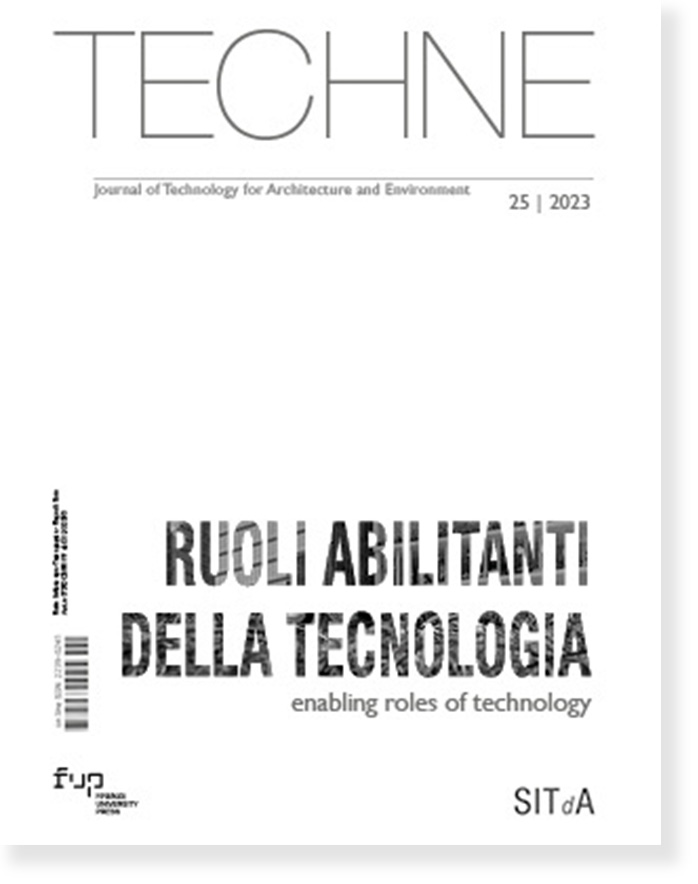No 25 (2023): Enabling Roles of Technology
Issue Description
Starting from the possibilities of transferring into the Architecture the so-called KETs (Key-Enabling Technologies), both tangible and intangible, issue 25 of TECHNE addressed the question of the enabling roles of Technology in the different areas of design. KETs have already extensively entered the field of Architecture and the governance of cities and territory, but they often pandered to the logic of technocratic production uncritically.
In its function as a medium, however, Technology can enable new ideational, adaptive, implementing, and managing processes applied to the transformation of the built environment at different scales. This is to overcome a purely instrumental and distorted dimension of KETs that risks overriding the very purpose of the project, opening the way to exclusively algorithmic and parametric technicalities. These drifts tend to generate reductionist readings, automated and merely quantitative standardizations of design goals and outcomes, failing instead to recognize its inherent complexity and the purposeful and critical design thinking that must underlie it.
The contributions received for this issue confirm, instead, that Technology is capable of playing an enabling role 'upstream, throughout and downstream' in the process of design and construction research and experimentation, according to an open, heuristic, innovative, inter and pluridisciplinary vision, proper to architectural design. The key themes proposed to prompt the development of the different contributions concern: 'Technology to the foresight and support decisions'; 'Technology to generate quality habitats'; 'Technology for the proper use of resources’.

